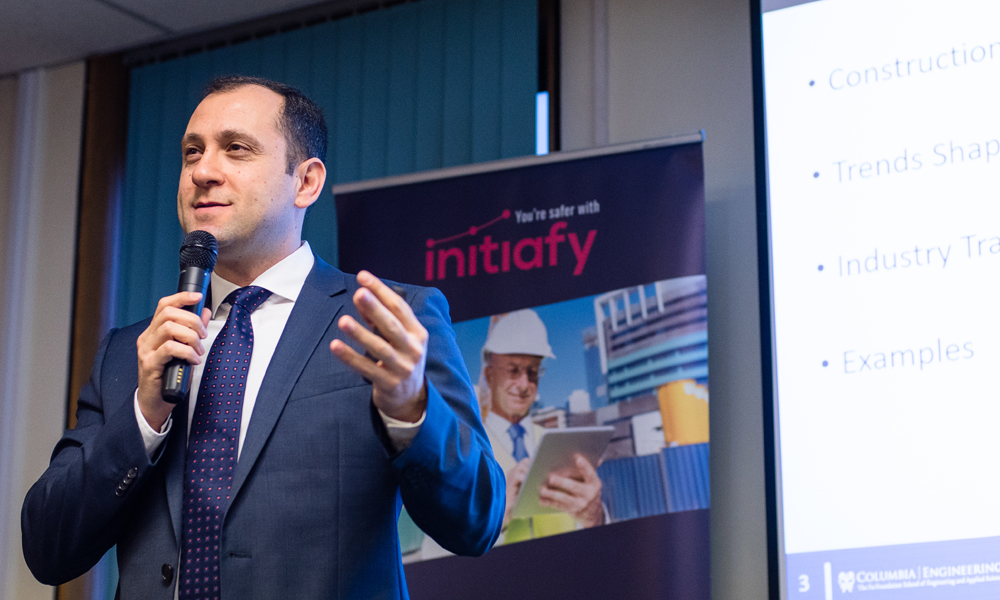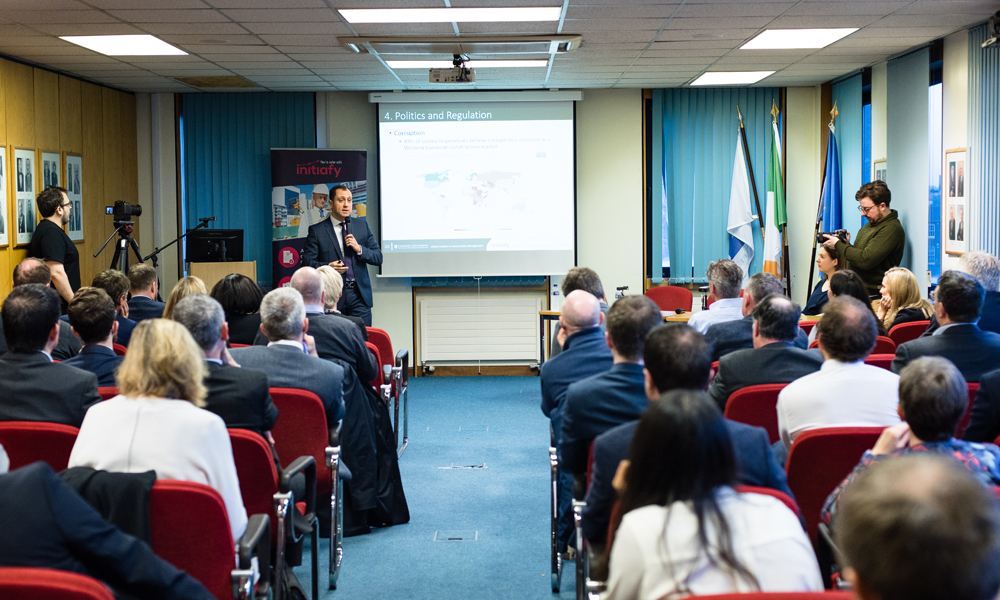Construction productivity is intractable. That’s what a recent report from McKinsey Global Institute says. While other industries like manufacturing and retail have transformed themselves and their productivity performance, the construction industry has been “stuck in a time warp,” says the report.
Statistics bear this statement out. Global labor-productivity growth in construction has averaged only about 1 percent over the past couple of decades. Meanwhile, the lack of interest in boosting productivity has cost the industry billions globally, says McKinsey’s report.
But that’s changing. Productivity is taking on a new urgency in the industry. This new urgency is pushing construction companies to find ways to supercharge productivity at job sites. And with good reason.
The soaring costs of inefficiency and project delays can halt a project almost in its tracks and cripple construction companies. Even minor inefficiencies can drive up project costs dramatically. For example, a recent study shows that rework costs about (US)$4.2 billion in the U.S. annually. Increasing productivity, on the other hand, can boost value-added globally by (US)$1.6 trillion.

Considering this trend, GoContractor recently hosted an event in conjunction with Construction Industry Federation to solve the issues of productivity in the construction industry. The event was marked by the presence of Dr. Ibrahim Odeh, Research Director and Founder of the Global Leaders in Construction Management (GLCM) at the Department of Civil Engineering and Engineering Mechanics at Columbia University, New York City, and Jeanette Mair, Economic and Policy Research Executive, Construction Industry Federation (CIF).
Below we examine several key issues, discussed at the event, driving the demand for increased construction productivity and four megatrends that could impact productivity within the industry. Plus, we discuss six steps to help you jump-start productivity at your company.
Construction Productivity Issues
Jeanette Mair pointed out key production issues in construction in a breakfast briefing held jointly by GoContractor and CIF at the agency’s Dublin offices on January 16.

Mair said in her presentation that construction contributed little to world productivity between 2000 and 2016, and may actually have experienced negative labor productivity growth during that period—a bleak research finding at best.
She sees construction productivity issues at three levels within the sector—the industry, the firm, and the external environment:
- At the industry level, she sees the key variables as the bespoke nature of the operating environment, contractual and procurement levels, and fragmented industry structure—both horizontally and vertically.
- At the firm level, she sees the critical variables as the availability of skilled labor especially at the supervisory level, underinvestment in project management basics, digitization, and innovation, and the hiring of workers to drive digitization.
- At the external level, Mair sees the key variables as increasing site and project complexities, external regulations and the cyclical nature of public investment, and problems with design processes.
Key steps companies can take to pump up construction productivity in the future, says Mair, are increasing innovation, boosting investment in training and education, reducing waste and rework, using customizable standard designs, and enhancing communication between client, design, builder, and regulator.
Mega Trends Driving the Demand for Improvement
Professor Ibrahim Odeh also spoke at the GoContractor briefing. Odeh is Research Director and Founder of the Global Leaders in Construction Management (GLCM), Department of Civil Engineering and Engineering Mechanics at Columbia University, New York City.

Odeh discussed four key megatrends shaping the industry’s future—trends that will impact the quest for more productivity. They are:
- Markets and customers
- Sustainability and resilience
- Society and workforce
- Politics and regulations
Below are factors within those trends that Odeh sees impacting construction productivity within the next few years:
Markets and customers
Odeh sees larger and more complex projects, like Britain’s huge Crossrail project and Dubai’s massive mall, as the type of projects that would further drive the demand for productivity improvement. Other factors driving the demand for increased productivity within this trend are aging infrastructures, increased demand in developing countries, and massive financing needs.
Sustainability and resilience
The construction industry, says Odeh, must address the industry’s growing footprint in the world environment. For example, the construction industry in the U.S. produces 50 percent of the solid waste and is the top consumers of global raw materials. Plus, says Odeh, today’s buildings generate 30 percent of global greenhouse gases.
Society and workforce
Urbanization is a growing factor in this trend, says Odeh. He points out that about 200 thousand people are added daily to urban areas and need affordable, healthy housing. Also, He sees an aging workforce and lack of talent as two other key factors. About 50 percent of general contractors, says Odeh, fear not finding experience craft worker for their workforces.
Policies and regulations
The most significant factors in this megatrend, says Odeh, is political corruption. For example, a recent survey found that 49 percent of respondents believe corruption is common in the Western European construction market. Geopolitical uncertainty is also a major factor impacting construction projects.
These four mega tends, says Odeh, will reshape the construction industry in the coming years and pump up the demand for increased construction productivity.

Boosting Construction Industry Productivity
Construction projects are strange business events. Minor inefficiencies in job site production can massively boost projects costs. On the other hand, incremental gains in job site production can dramatically impact on a project productivity. That can save construction companies significant time and money, boosting profitability.
Below are six best practices you can implement to boost productivity at your job site and within your company:
- Capitalize on technology — Adopting technology is among the best and fastest ways to enhance productivity and generate big payoffs. Solutions, like onsite productivity, project management, and building information modeling software, eliminates rework and cuts costs.
- Improve planning with more data — Analyzing the building process from end-to-end on past projects can pinpoint strengths and weaknesses in production. Implementing measures to address these areas can make a difference.
- Upgrading skills training — Boosting skills training is critical to driving up productivity on projects. Project supervisors are critical training targets. They make or break jobs.
- Increase the use of prefabrication — Prefabrication beats building from scratch almost every time. Prefabrication not only boosts productivity, but also cuts cost and enhances quality.
- Create shorter more team-friendly contracts — Instead of adding people to your legal team, create shorter contracts requiring less mediation and more engagement from team members. Japan and South Korea have done this and its paid off.
- Improve safety training and provide more of it — Worksite accidents increase project delays and cost overruns. But many construction companies use outmoded safety training practices, like classroom sessions to train workers. Technology can help here, too.
GoContractor’s software platform, for example, can help you implement many best practices that can boost productivity quickly, efficiently, and cost-effectively. Simple and easy-to-use, GoContractor can:
- Streamline the contractor management process
- Provide a structured roadmap for worker training
- Create a safer, more compliant workplace
- Provide workers ready to start work on the first day
- Increase training effectiveness with its online teaching approach
- Eliminate the paperwork associated with contractor management
- Enable workers to self-register their qualifications and skills online
Implementing some or all of these practices can dramatically cut worksite costs, reduce project rework, and boost corporate profitability—without making major changes to how you do things.
Controlling productivity has always been a challenge for construction companies. But the demand for increasing construction productivity is growing in importance daily. And with good reason. Project rework can demoralize workers, delay project completion, and cripple construction companies’ reputations. More importantly, it can boost project costs.
But things are changing in the industry. More and more companies are taking productivity seriously. That’s creating more urgency to find solutions and eliminate rework. Implementing some or all of the six best practices discussed above can help companies finally gain control of construction productivity.
